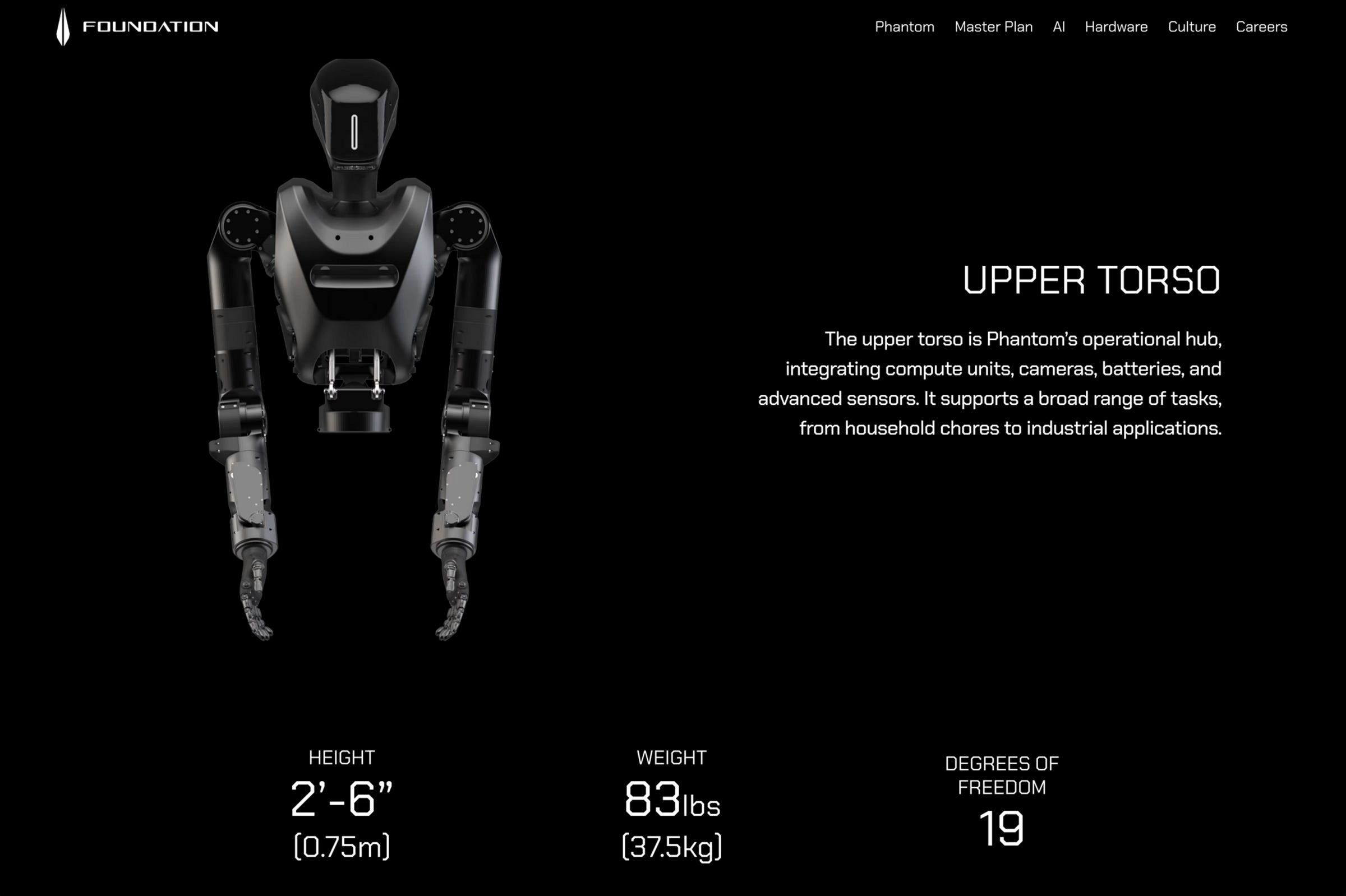War Isn’t Ready for Humanoid Robot Infantry
Although one company is trying really hard.

When Hollywood imagines the future of war, it always seems to star a bipedal robot with glowing eyes and suspiciously good balance.
The Terminator fantasy refuses to die.
And now a San Francisco startup called Foundation is leaning all the way in, unveiling a five-foot-nine, 175-pound humanoid robot named Phantom MK-1; a machine the CEO calls the “first line of defense” for tomorrow’s battles.
As someone who spent a decade in the military, let me be clear: if I ever saw a humanoid robot walking point for my platoon, I’d assume the enemy hacked the Pentagon and was playing a sick joke. Because while robots on battlefields are real, (Ukraine proves that daily), the economics, engineering, and physics of making them walk like humans remain an Olympic-level challenge.
But hey, startups love a “moonshot.” So here we are.
Foundation wants Phantom robots serving alongside human warfighters, doing reconnaissance, hauling supplies, maybe even carrying weapons once the lawyers stop sweating.
Their pitch is noble: let robots take the first bullet so a soldier doesn’t have to.
Phantom can lug about 44 pounds today. Future models could move faster, stronger, more capable. The company says they want to produce 10,000 units a year, eventually replacing human grunts at the front. I can already hear the infantry groaning, not because they fear robots, but because they know robots will eventually need maintenance, and field maintenance always falls on infantry.
The head of Foundation even told reporters that “the future of warfare is real-life video games.”
Awwww, it’s cute to imagine the battlefield as a Call of Duty lobby. But reality involves mud, smoke, blood, and technology that reminds you hourly that Murphy’s Law remains undefeated.
Humanoid warfighters may sound inevitable. But if they were inevitable, you’d see them everywhere already. And you don’t.
Which raises the question: why have Boston Dynamics, Tesla, Hyundai, and every other major robotics firm politely backed away from military combat robots that look like humans?
Well, I think part of it is some unspoken corporate taboo about creating anything that resembles the public perception (thanks to sci-fi) of humanoid killing machines.
But the other part is a real engineering challenge.
The Engineering Reality: Humans Are Terrible Templates
Nature invested millions of years into making us bipedal. Evolution wasn’t trying to optimize stability or efficiency, just survival.
That’s why we fall over when the dog sprints underfoot…
Why we twist our ankles stepping off a curb.
Why “balance” is something your chiropractor charges you for.
Now try teaching all of that to a robot.
Tracked robots? Easy.
Four-legged robots? Difficult but doable.
Both have naturally lower centers of gravity and stable platforms for weapons. They don’t topple over when a gust of wind gets ambitious. And they don’t need to replicate the world’s most temperamental joint system: knees.
Humanoid robots, by contrast, are an engineering nightmare. Every step is a physics problem. Every stair is a scientific dissertation. And when they fall, which they will, they snap expensive parts instead of bones that heal for free.
Human shape only makes sense if the robot must navigate human-designed environments like ladder rungs, door handles, uneven trenches. Even then, wheels and tracks usually beat legs. Ask any American logistics sergeant: if it can’t be strapped to a pallet and survive a ride in a cargo plane, it’s camping gear, not combat gear.
Keep reading with a 7-day free trial
Subscribe to Eyes Only with Wes O'Donnell to keep reading this post and get 7 days of free access to the full post archives.


